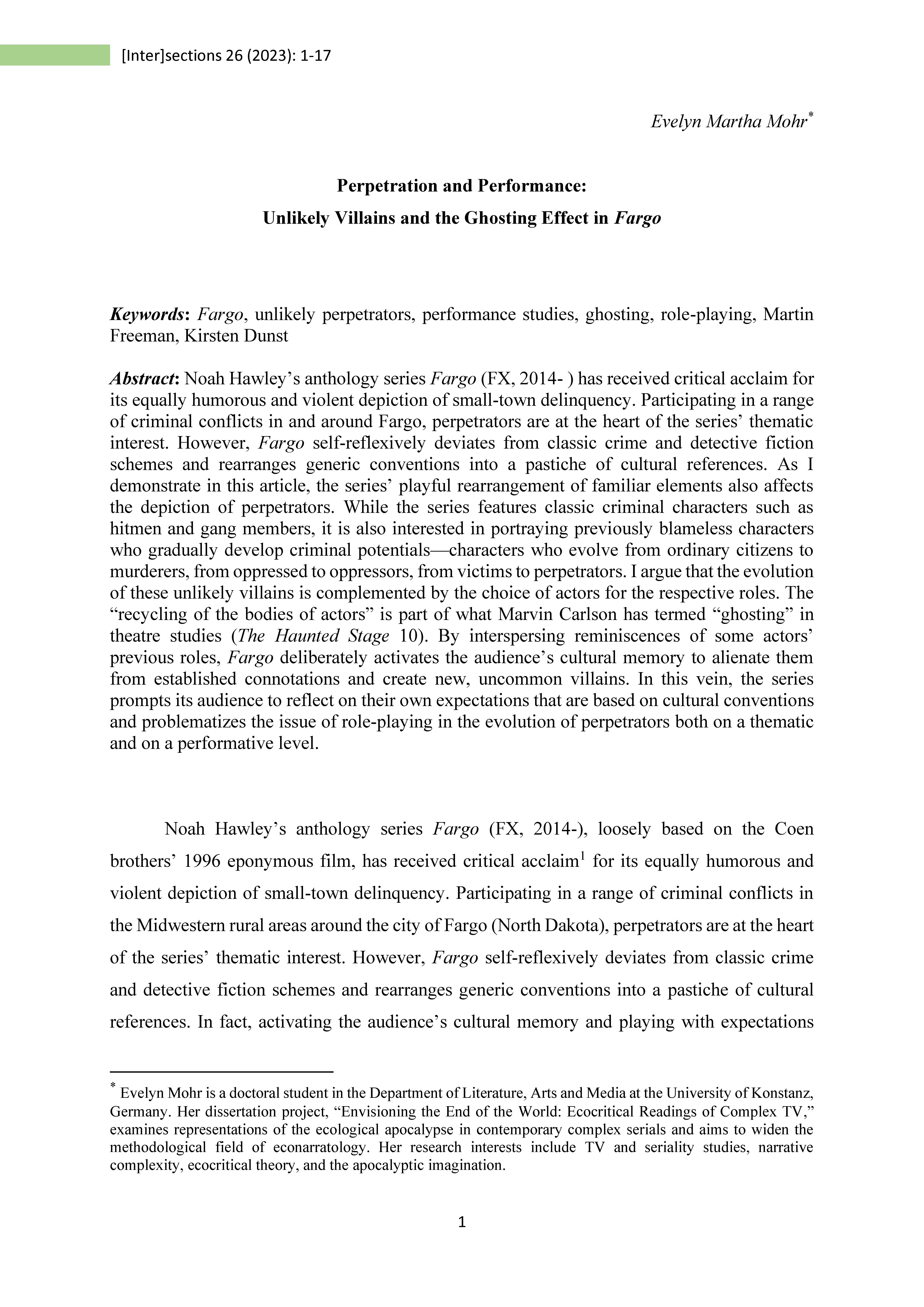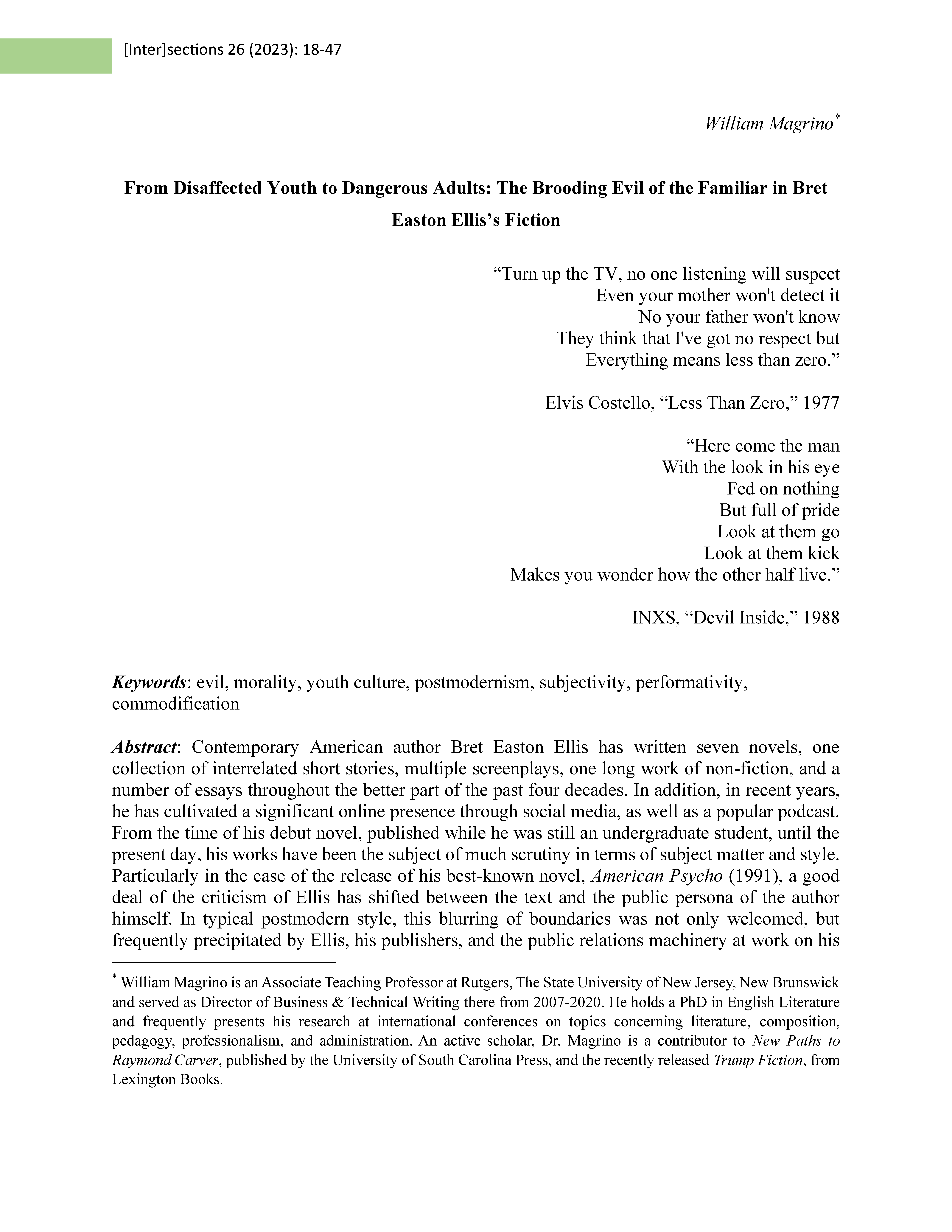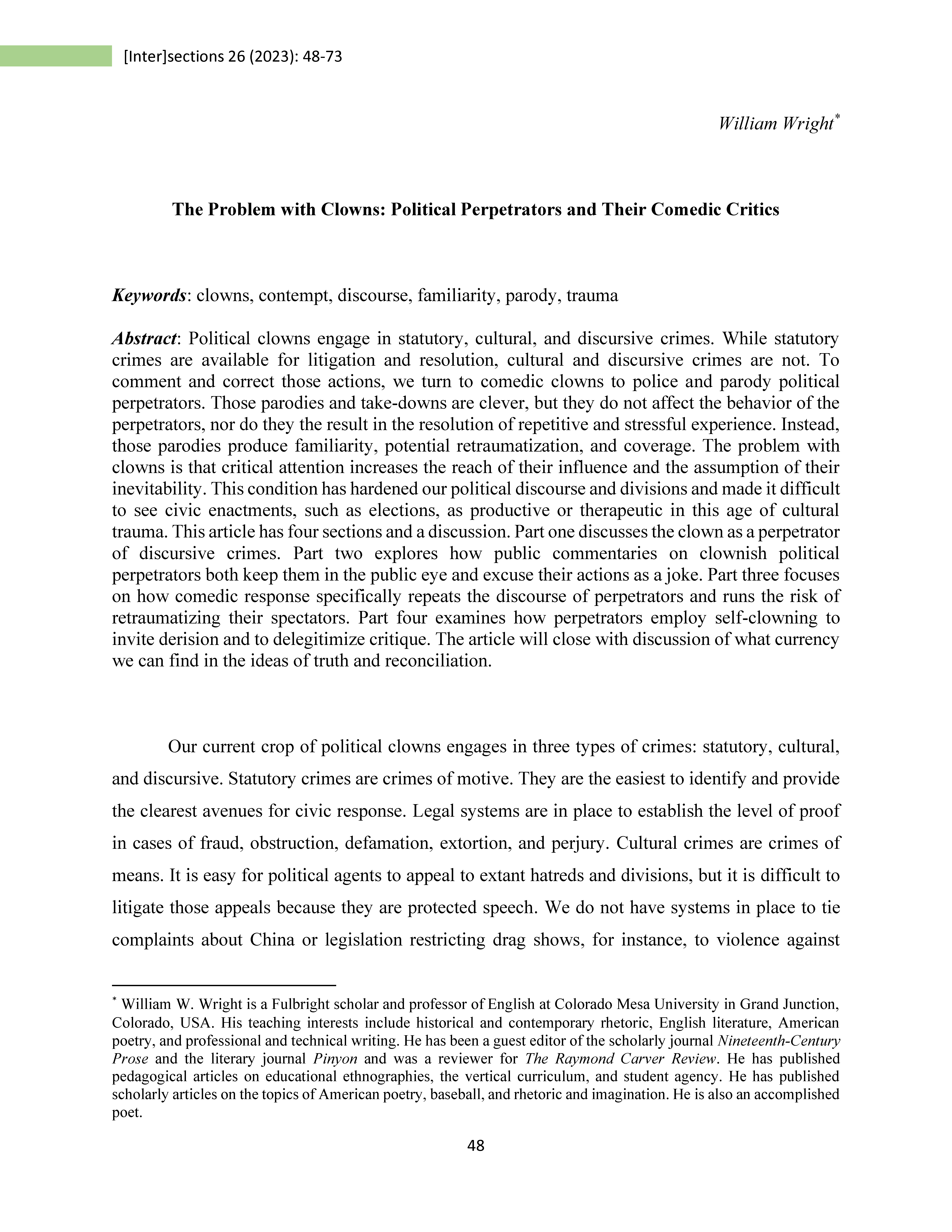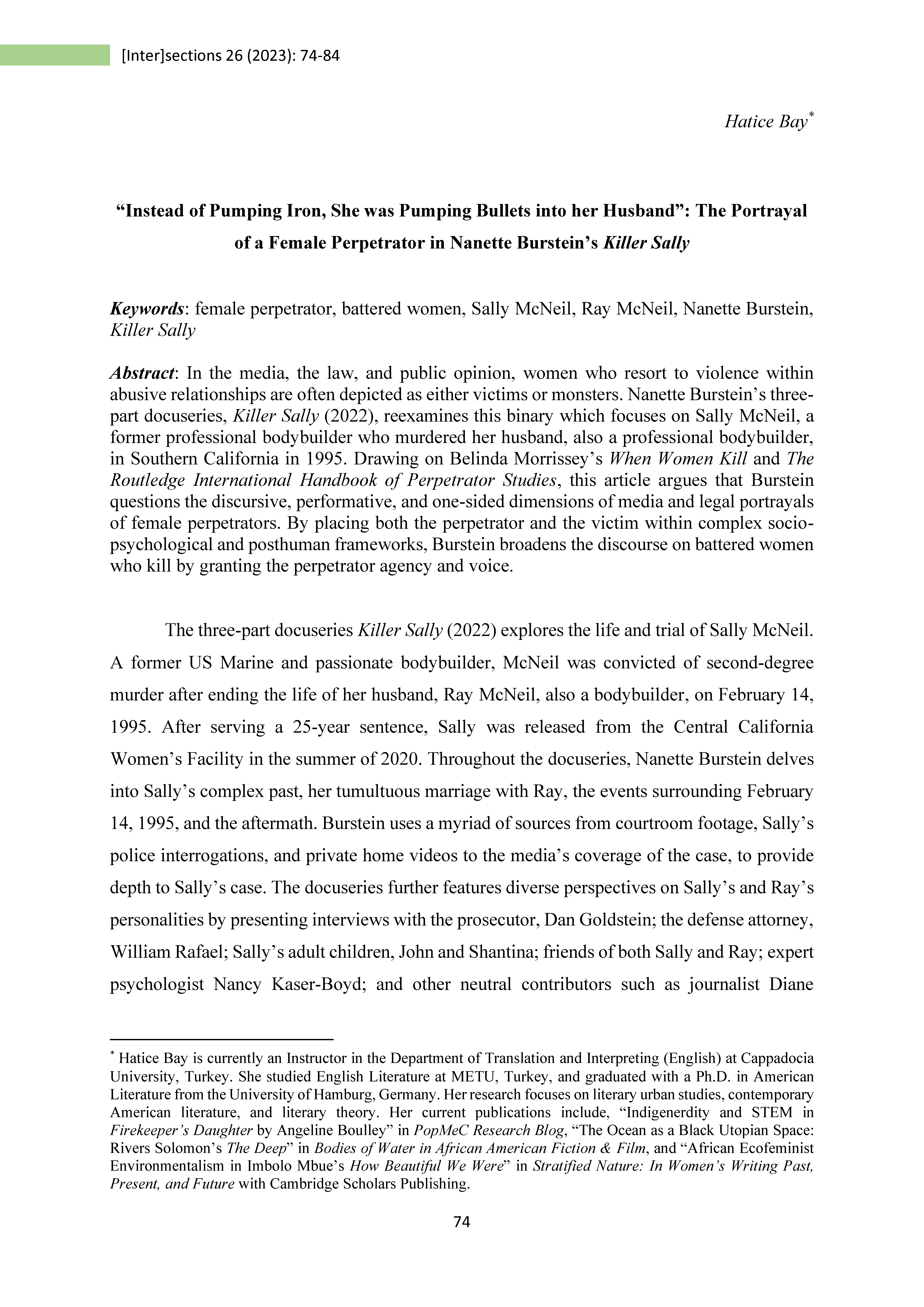Vol. 26 No. 1 (2023): Familiar Perpetrators: On the Intimacy of Evil in Contemporary American Literature and Popular Culture
Special issue on Familiar Perpetrators: On the Intimacy of Evil in Contemporary American Literature and Popular Culture. This issue was co-edited by Dragoș Manea, Dana Mihăilescu, Roxana Oltean and Mihaela Precup, whose work was supported by PCE grant 101/2021, “Familiar Perpetrators: On the Intimacy of Evil in Contemporary American Literature and Popular Culture,” offered by UEFISCDI.
Published:
2025-02-06








